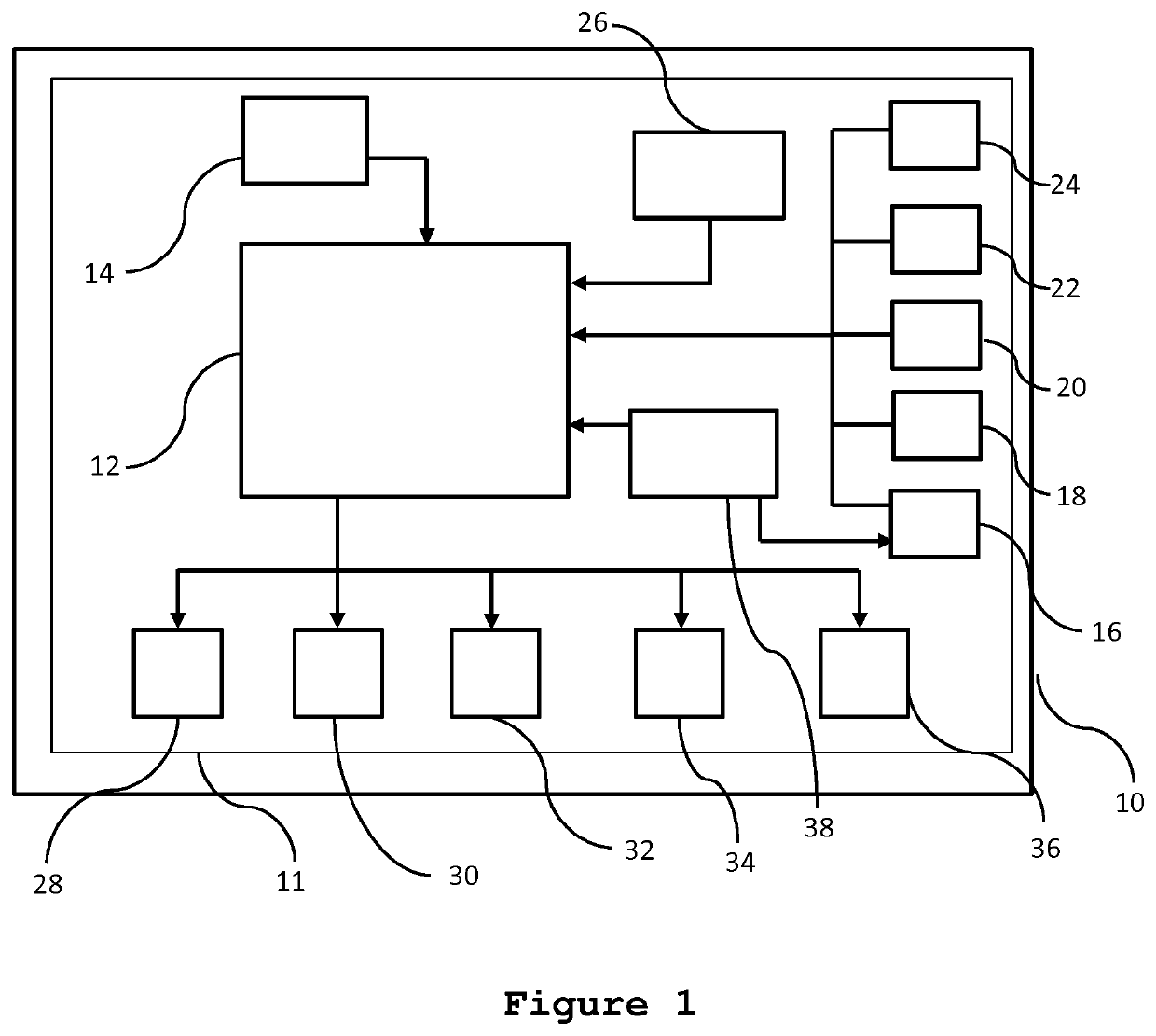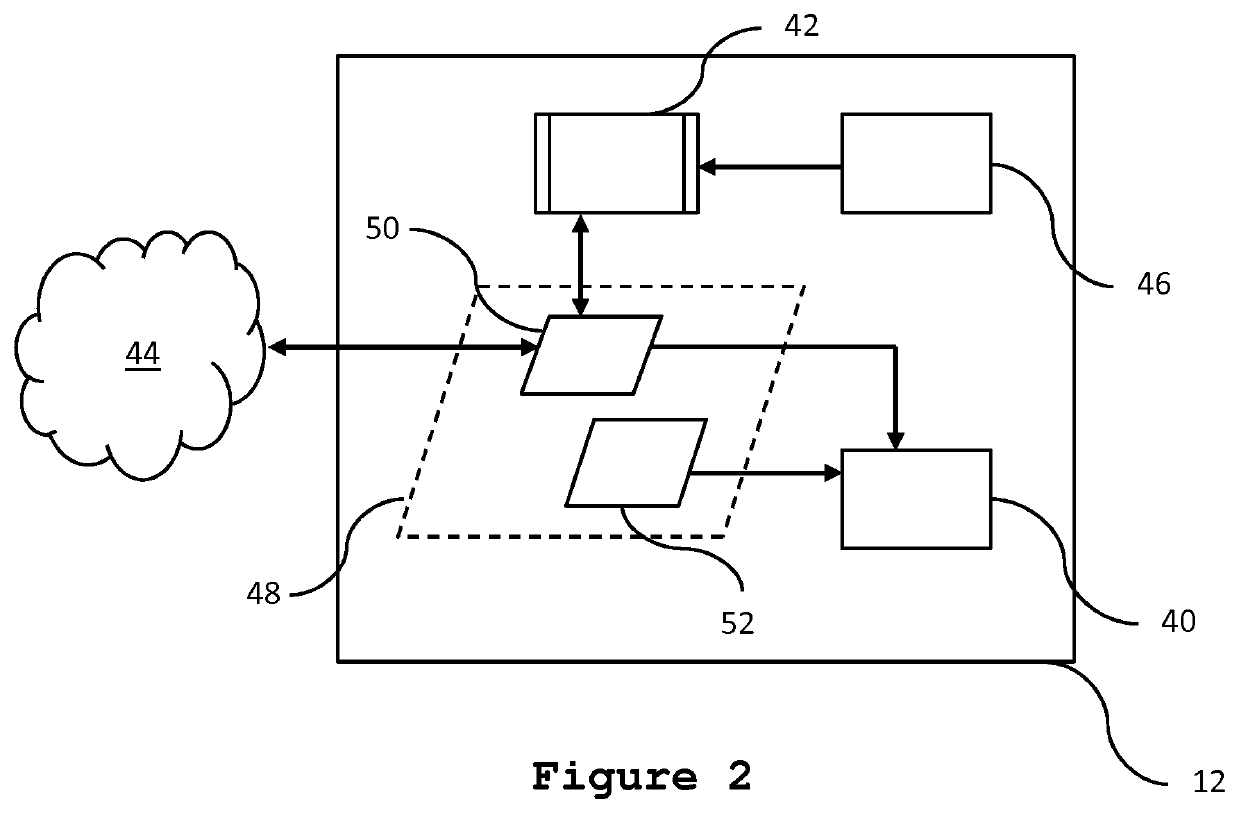Automated climate control system
a technology of automatic climate control and vehicle, which is applied in the direction of adaptive control, vehicle heating/cooling devices, air-treating devices, etc., can solve the problems of large burden on system feedback functionality, corresponding impact on user feedback functionality, constant need for user feedback adjustments, etc., to reduce the risk of control policy containing erroneous data, reduce the burden on the feedback module, and reduce the length of time it takes
- Summary
- Abstract
- Description
- Claims
- Application Information
AI Technical Summary
Benefits of technology
Problems solved by technology
Method used
Image
Examples
Embodiment Construction
[0054]FIG. 1 illustrates a vehicle 10 including an automated climate control system. The climate control system includes a control unit 12, which is electronically connected to a plurality of input devices, including a human-machine interface (HMI) device 14 and a seat pressure sensor 26. The control unit 12 is also connected to a plurality of environmental parameter sensors, including an energy usage sensor 16, a seat temperature sensor 18, a humidity sensor 22, a windshield clarity sensor 20 and an air temperature sensor 24. The control unit 12 is also electronically connected to a plurality of actuators, including a windshield heating element 28, a steering wheel heating element 36, an A / C unit 34, a fan motor 30 and an air heating element 32.
[0055]A battery 38 is electrically connected to the control unit 12, and is arranged to provide power to the control unit 12 and all the accompanying inputs and actuators.
[0056]The HMI device 14 includes a rotatable dial, which is configured...
PUM
 Login to View More
Login to View More Abstract
Description
Claims
Application Information
 Login to View More
Login to View More - R&D
- Intellectual Property
- Life Sciences
- Materials
- Tech Scout
- Unparalleled Data Quality
- Higher Quality Content
- 60% Fewer Hallucinations
Browse by: Latest US Patents, China's latest patents, Technical Efficacy Thesaurus, Application Domain, Technology Topic, Popular Technical Reports.
© 2025 PatSnap. All rights reserved.Legal|Privacy policy|Modern Slavery Act Transparency Statement|Sitemap|About US| Contact US: help@patsnap.com



